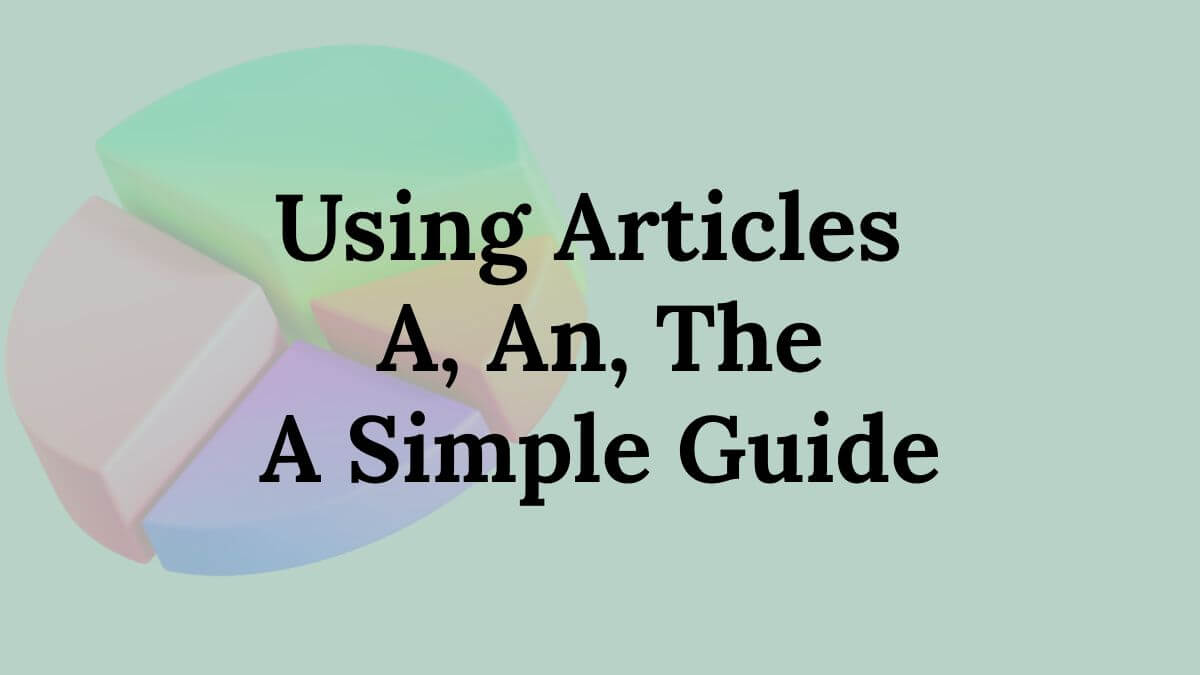The terms a, an, and the are used in English, and understanding them can also help you learn prepositions more effectively. These small words are key to good sentences. Knowing how to use them is vital for English. It builds confidence in speaking and writing. Also, articles make learning prepositions easier.
What Are Articles in English?
Articles are words placed before nouns to show whether we are talking about something specific or general. There are two types of articles:
- Indefinite articles: a and an
- Definite article: the
Let us practice particular scenarios and writing prompt strategies, such as creating a report or a work of creative fiction.
An and A: What Makes Them Different?
Use a before words that start with a consonant sound.
Put a before word and pre-words that start with a consonant.
Examples:
- a dog
- a house
- a university (starts with a “you” sound, a consonant sound)
Use “an” before words that begin with a vowel sound
Examples:
- an apple
- an idea
- an hour (the h is silent—sounds like “our”)
Quick tip: Pay attention to the initial word’s sound rather than just its letter.
When to Use – The
When speaking about a particular someone, place, or item that the audience is already familiar with, you use the pronoun “the.”
Examples:
- I saw a dog. The dog was adorable.
- Let us get together in the coffee shop close to my place.
- Today, the sun is shining.
Use the when:
- The noun has already been mentioned
- There’s only one of the things (like the moon)
- The meaning is clear from context
Learn Prepositions + Articles Together
If you’re trying to learn prepositions, you’ll notice that they often appear right next to articles in real sentences. Let’s look at how articles and prepositions naturally work together.
Common prepositional phrases with articles:
- on the table
- In a box
- under an umbrella
- at the bus stop
Learn Prepositions Through Article-Use Examples:
- She put her bag on the chair.
- He stayed in a hotel near the beach.
- He left his phone at the office.
- There’s an old photo in the drawer.
- They walked through the forest in the morning.
These real-life phrases are perfect for learners trying to learn prepositions in a natural context.
Read More:
- Basic Sentence Structure Made Easy With Clear Examples
- 500 Emotional Vocabulary List, Emotional Word List for English Learners
Common Mistakes with Articles
Even advanced learners make small mistakes when using articles. Let’s fix a few:
- I saw an university.
I saw a university. (It starts with a “you” sound.) - She’s reading a interesting book.
She’s reading an interesting book. - Let’s meet at a school we both went to.
Let’s meet at the school we both went to.
Quick Rules to Remember
Use a/an:
– When talking about something for the first time
– When the noun is general
Examples:
- a teacher
- an idea
- a pencil
Use the:
When the noun is specific or already known, when there’s only one of the things
Examples:
- The sky
- The phone on the table
- The answer
Practice Time! (Test Yourself)
Use a, an, or the to fill in the blanks:
- I saw ___ owl in the tree.
- She packed ___ umbrella just in case.
- We had dinner at ___ restaurant in town.
- He opened ___ book and started reading.
- They played soccer at ___ park.
Answers:
- an
- an
- a
- a
- the
Why It Helps to Learn Prepositions Alongside Articles
When you learn prepositions, you’ll notice they almost always come in phrases like in the room, on a bench, at the office. Understanding how articles fit into these phrases makes your English sound smoother and more natural.
Try this:
- Make a list of common prepositions like in, on, at, under, next to
- Create short phrases using a, an, or the
(e.g., under an umbrella, at the park, on a table) - Listen for these phrases in songs, shows, or conversations
You’ll start spotting patterns—and that’s when grammar becomes easy!
Why It Helps to Learn Prepositions Alongside Articles
Most prepositional phrases include articles, so when you understand one, you naturally get better at the other. Learning how they work together makes your English sound smooth and natural.
Try This:
- Make a list of prepositions: in, on, at, under, next to
- Create phrases using articles: on a bench, at the door, under an umbrella
- Listen to English shows, music, or podcasts, and notice how often articles and prepositions appear together
Conclusion
Articles may be small, but they are powerful tools in English grammar. Using a, an, and the correctly helps you speak and write more clearly—and gives you the foundation you need to learn prepositions confidently.
It becomes more instinctive the more you practice. Regularly speak, write, listen, and read—and do not be scared to make mistakes. You get closer to fluency in English each time you use an article correctly.
